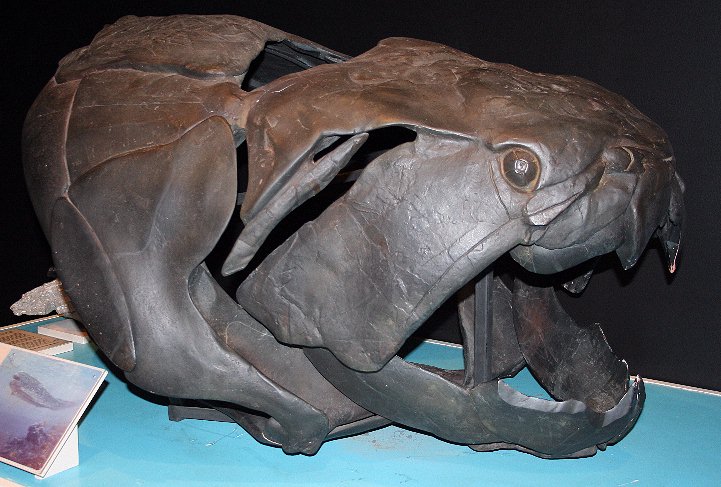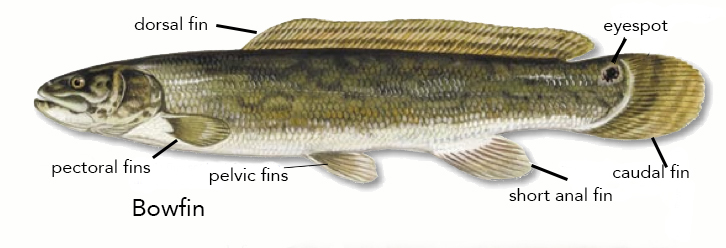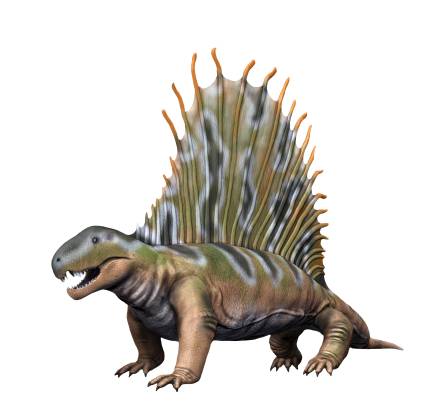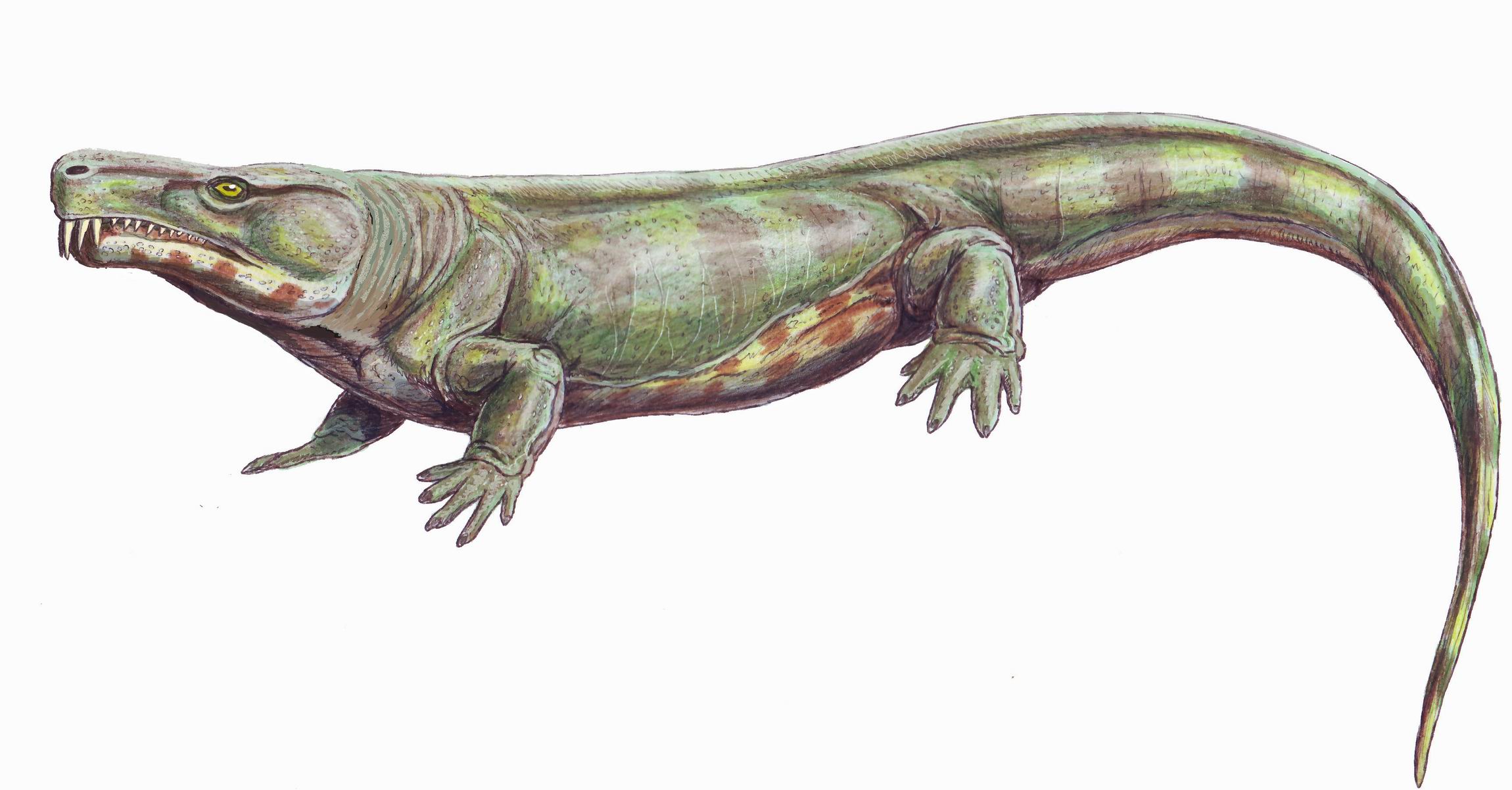|
Postparietal
Postparietals are cranial bones present in fish and many Tetrapod, tetrapods. Although initially a pair of bones, many lineages possess postparietals which were fused into a single bone. The postparietals were Dermal bone, dermal bones situated along the midline of the skull, behind the Parietal bone, parietal bones. They formed part of the rear edge of the skull roof, and the lateral edge of each postparietal often contacts the Tabular bone, tabular and Supratemporal bone, supratemporal bones. In fish, the postparietals are elongated, typically the largest components of the skull roof. Tetrapods possessed shorter postparietals, which were reduced further and shifted towards the Neurocranium, braincase in Amniote, amniotes. At several points in synapsid evolution, the postparietals fused to each other and the tabulars during Embryology, embryological development. This fusion produces the interparietal bone, which is inherited by Mammal, mammals. Postparietals are common in extinct Am ... [...More Info...] [...Related Items...] OR: [Wikipedia] [Google] [Baidu] |
Sauria
Sauria is the clade of diapsids containing the most recent common ancestor of Archosauria (which includes crocodilians and birds) and Lepidosauria (which includes squamates and the tuatara), and all its descendants. Since most molecular phylogenies recover turtles as more closely related to archosaurs than to lepidosaurs as part of Archelosauria, Sauria can be considered the crown group of diapsids, or reptiles in general. Depending on the systematics, Sauria includes all modern reptiles or most of them (including birds, a type of archosaur) as well as various extinct groups. Sauria lies within the larger total group Sauropsida, which also contains various stem-reptiles which are more closely related to reptiles than to mammals. Prior to its modern usage, "Sauria" was used as a name for the suborder occupied by lizards, which before 1800 were considered crocodilians. Systematics Sauria was historically used as a partial equivalent for Squamata (which contains lizards and sna ... [...More Info...] [...Related Items...] OR: [Wikipedia] [Google] [Baidu] |
Skull Roof
The skull roof or the roofing bones of the skull are a set of bones covering the brain, eyes and nostrils in bony fishes, including land-living vertebrates. The bones are derived from dermal bone and are part of the dermatocranium. In comparative anatomy, the term is applied to the whole dermatocranium. Romer, A.S. & T.S. Parsons. 1977. ''The Vertebrate Body.'' 5th ed. Saunders, Philadelphia. (6th ed. 1985) In general anatomy, the roofing bones may refer specifically to the bones that form above and alongside the brain and neurocranium (i.e., excluding the marginal upper jaw bones such as the maxilla and premaxilla). In human anatomy, the skull roof often refers specifically to the skullcap. Origin Early armoured fish (such as jawless ostracoderms and jawed placoderms) did not have a skull in the common understanding of the word, but instead had a cartilaginous endocranium that was partially open from above. The loose cartilage was topped by dermal bones forming armo ... [...More Info...] [...Related Items...] OR: [Wikipedia] [Google] [Baidu] |
Bowfin
The ruddy bowfin (''Amia calva'') is a ray-finned fish native to North America. Common names include mudfish, mud pike, dogfish, grindle, grinnel, swamp trout, and choupique. It is regarded as a relict, being one of only two surviving species of the Halecomorphi, a group of fish that first appeared during the Early Triassic, around 250 million years ago. The bowfin is often considered a "living fossil" because they have retained some morphological characteristics of their early ancestors. It is one of two species in the genus ''Amia,'' along with '' Amia ocellicauda'', the eyespot bowfin. The closest living relatives of bowfins are gars, with the two groups being united in the clade Holostei. Bowfins are demersal freshwater piscivores, commonly found throughout much of the eastern United States, and in southern Ontario and Quebec. Fossil deposits indicate Amiiformes were once widespread in both freshwater and marine environments across North and South America, Europe, ... [...More Info...] [...Related Items...] OR: [Wikipedia] [Google] [Baidu] |
Neural Crest
The neural crest is a ridge-like structure that is formed transiently between the epidermal ectoderm and neural plate during vertebrate development. Neural crest cells originate from this structure through the epithelial-mesenchymal transition, and in turn give rise to a diverse cell lineage—including melanocytes, craniofacial cartilage and bone, smooth muscle, dentin, peripheral and enteric neurons, adrenal medulla and glia. After gastrulation, the neural crest is specified at the border of the neural plate and the non-neural ectoderm. During neurulation, the borders of the neural plate, also known as the neural folds, converge at the dorsal midline to form the neural tube. Subsequently, neural crest cells from the roof plate of the neural tube undergo an epithelial to mesenchymal transition, delaminating from the neuroepithelium and migrating through the periphery, where they differentiate into varied cell types. The emergence of the neural crest was important in v ... [...More Info...] [...Related Items...] OR: [Wikipedia] [Google] [Baidu] |
Synapsid
Synapsida is a diverse group of tetrapod vertebrates that includes all mammals and their extinct relatives. It is one of the two major clades of the group Amniota, the other being the more diverse group Sauropsida (which includes all extant reptiles and therefore, birds). Unlike other amniotes, synapsids have a single temporal fenestra, an opening low in the skull roof behind each eye socket, leaving a zygomatic arch, bony arch beneath each; this accounts for the name "synapsid". The distinctive temporal fenestra developed about 318 million years ago during the Late Carboniferous period, when synapsids and sauropsids diverged, but was subsequently merged with the orbit in early mammals. The basal (phylogenetics), basal amniotes (reptiliomorphs) from which synapsids evolved were historically simply called "reptiles". Therefore, stem group synapsids were then described as mammal-like reptiles in classical systematics, and non-therapsid synapsids were also referred to as pelyco ... [...More Info...] [...Related Items...] OR: [Wikipedia] [Google] [Baidu] |
Dimetrodon Skull Occipital
''Dimetrodon'' ( or ; ) is an extinct genus of sphenacodontid synapsid that lived during the Cisuralian (Early Permian) epoch of the Permian period, around 295–272 million years ago. With most species measuring long and weighing , the most prominent feature of ''Dimetrodon'' is the large neural spine sail on its back formed by elongated spines extending from the vertebrae. It was an obligate quadruped (it could walk only on four legs) and had a tall, curved skull with large teeth of different sizes set along the jaws. Most fossils have been found in the Southwestern United States, the majority of these coming from a geological deposit called the Red Beds of Texas and Oklahoma. More recently, its fossils have also been found in Germany and over a dozen species have been named since the genus was first erected in 1878. ''Dimetrodon'' is often mistaken for a dinosaur or portrayed as a contemporary of dinosaurs in popular culture, but it became extinct by the middle Permian ... [...More Info...] [...Related Items...] OR: [Wikipedia] [Google] [Baidu] |
Discosauriscus
''Discosauriscus'' was a small seymouriamorph which lived in what is now Central and Western Europe during the latest Carboniferous and in the Early Permian Period. Its best fossils have been found in the Broumov and Bačov Formations of Boskovice Furrow, in the Czech Republic. Classification ''Discosauriscus'' belongs to the order Seymouriamorpha, and is the type genus of the family Discosauriscidae. Currently recognised are two valid species - ''Discosauriscus austriacus'' and ''Discosauriscus pulcherrimus''. ''Letoverpeton'' is a junior synonym of ''Discosauriscus''. Characteristics Discosauriscids were long thought to be known from larval or neotenic Neoteny (), also called juvenilization,Montagu, A. (1989). Growing Young. Bergin & Garvey: CT. is the delaying or slowing of the physiological, or somatic, development of an organism, typically an animal. Neoteny in modern humans is more signif ... forms, and three ontogenetic stages had been distinguished.Klembara, Jo ... [...More Info...] [...Related Items...] OR: [Wikipedia] [Google] [Baidu] |
Seymouriamorpha
Seymouriamorpha were a small but widespread group of limbed vertebrates (tetrapods). They have long been considered stem group, stem-amniotes (reptiliomorphs), and most paleontologists still accept this point of view, but some analyses suggest that seymouriamorphs are stem-tetrapods (not more closely related to Amniota than to Lissamphibia). Many seymouriamorphs were terrestrial or semi-aquatic. However, aquatic larvae bearing external gills and grooves from the lateral line system have been found, making them unquestionably non-amniotes. As they matured, they became more terrestrial and reptile-like. They ranged from 30 cm (1 ft) long lizard-sized creatures to the 1.5 m (5 ft) long ''Enosuchus''. If seymouriamorphs are reptiliomorphs, they were the distant relatives of amniotes. Seymouriamorphs are divided into three main groups: Kotlassiidae, Discosauriscidae, and Seymouriidae, which includes the best-known genus, ''Seymouria''. The last seymouriamorphs became Permian-Triassic ... [...More Info...] [...Related Items...] OR: [Wikipedia] [Google] [Baidu] |
Diadectomorpha
Diadectomorpha is a clade of large tetrapods that lived in Euramerica during the Carboniferous and Early Permian periods and in Asia during Late Permian (Wuchiapingian), They have typically been classified as advanced reptiliomorphs (transitional between "amphibians" ''sensu lato'' and amniotes) positioned close to, but outside of the clade Amniota, though some recent research has recovered them as the sister group to the traditional Synapsida within Amniota, based on inner ear anatomy and cladistic analyses. They include both large (up to 2 meters long) carnivorous and even larger (to 3 meters) herbivorous forms, some semi-aquatic and others fully terrestrial. The diadectomorphs seem to have originated during late Mississippian times, although they only became common after the Carboniferous rainforest collapse and flourished during the Late Pennsylvanian and Early Permian periods. Anatomy Diadectomorphs possessed both amphibian-like and amniote-like characteristics. Origin ... [...More Info...] [...Related Items...] OR: [Wikipedia] [Google] [Baidu] |
Coelacanth
Coelacanths ( ) are an ancient group of lobe-finned fish (Sarcopterygii) in the class Actinistia. As sarcopterygians, they are more closely related to lungfish and tetrapods (the terrestrial vertebrates including living amphibians, reptiles, birds and mammals) than to ray-finned fish. The name coelacanth originates from the Permian genus '' Coelacanthus'', which was the first scientifically named genus of coelacanths (in 1839), becoming the type genus of Coelacanthiformes as other species were discovered and named. Well-represented in freshwater and marine deposits from as early as the Devonian period (more than 410million years ago), they were thought to have become extinct in the Late Cretaceous, around 66million years ago. The first living species, ''Latimeria chalumnae'', the West Indian Ocean coelacanth, was described from specimens fished off the coast of South Africa from 1938 onward; they are now also known to inhabit the seas around the Comoro Islands off the eas ... [...More Info...] [...Related Items...] OR: [Wikipedia] [Google] [Baidu] |
Lateral Line
The lateral line, also called the lateral line organ (LLO), is a system of sensory organs found in fish, used to detect movement, vibration, and pressure gradients in the surrounding water. The sensory ability is achieved via modified epithelial cells, known as hair cells, which respond to displacement caused by motion and transduce these signals into electrical impulses via excitatory synapses. Lateral lines play an important role in schooling behavior, predation, and orientation. Early in the evolution of fish, some of the sensory organs of the lateral line were modified to function as the electroreceptors called ampullae of Lorenzini. The lateral line system is ancient and basal to the vertebrate clade, as it is found in fishes that diverged over 400 million years ago. Function The lateral line system allows the detection of movement, vibration, and pressure gradients in the water surrounding an animal. It plays an essential role in orientation, predation, and fish ... [...More Info...] [...Related Items...] OR: [Wikipedia] [Google] [Baidu] |
Edops
''Edops'' ('swollen face') is an extinct genus of temnospondyl amphibian from the Late Carboniferous - Early Permian periods. Unlike more advanced temnospondyls of the time, such as ''Eryops'', ''Edops'' exhibited an archaic pattern of palatal bones, and still possessed various additional bones at the back of the skull. Edopoids also had particularly big premaxillae (the bones that form the tip of the snout) and proportionally small external nostrils. Within the clade, the most basal member seems to be ''Edops'' from the Early Permian Archer City Formation of the US, a broad-skulled animal with large palatal teeth. ''Edops'' was fairly big, at in length. Fragmentary remains from the Viséan of Scotland appear to come from ''Edops'' or a close relative and hence predate the type ''Edops'' material of the Permian. Discovery and naming The American paleontologist Alfred Sherwood Romer named ''Edops'' "swollen face" (from Greek ''oidos'' "swelling" and Greek ''ops'' "face") in 19 ... [...More Info...] [...Related Items...] OR: [Wikipedia] [Google] [Baidu] |






